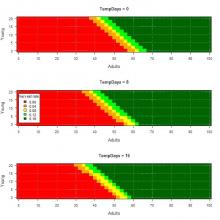Current Size: 76%
Evaluating the impact of uncertainty when determining sustainable harvest strategies to manage the Pink-footed Goose Population
Summary
This article explores and evaluates the uncertainties associated with the population dynamics and predictive models developed for the pink-footed goose, and how these influence the selection of an optimal harvest strategy for the Svalbard population. In addition, it outlines the gain in management performance (i.e. maintaining a stable population at the desired population size) that could be expected if uncertainty could be eliminated or reduced, and whether an adaptive or robust management strategy might be most appropriate in the face of uncertainty. An adaptive strategy being one where the credibility of the models are periodically revised, whilst a robust strategy is where no learning is anticipated.
The article also emphasises that the implementation of any informed strategy, either adaptive or robust requires an adequate monitoring program. Continuing a ground census count that provides estimates of population size and proportion of young is regard as essential, preferably post-harvest during spring migration (after the impact of any management actions). In addition, for relatively long-lived species like the pink-footed goose, eliminating uncertainty about survival rates used in predictive models provide the greatest gain in management performance. Furthermore, it is noted that any age dependency in survival also has important implications for how populations respond to harvest. Concerted efforts are recommended to re-assess current rates of survival and acquire either estimates of realized total harvest rates or the age composition of the harvest.
For further insights this article is published as an open-access article in Ecological Modelling and is available on-line through Science Direct / Elsevier.
A PDF copy is attached below:















